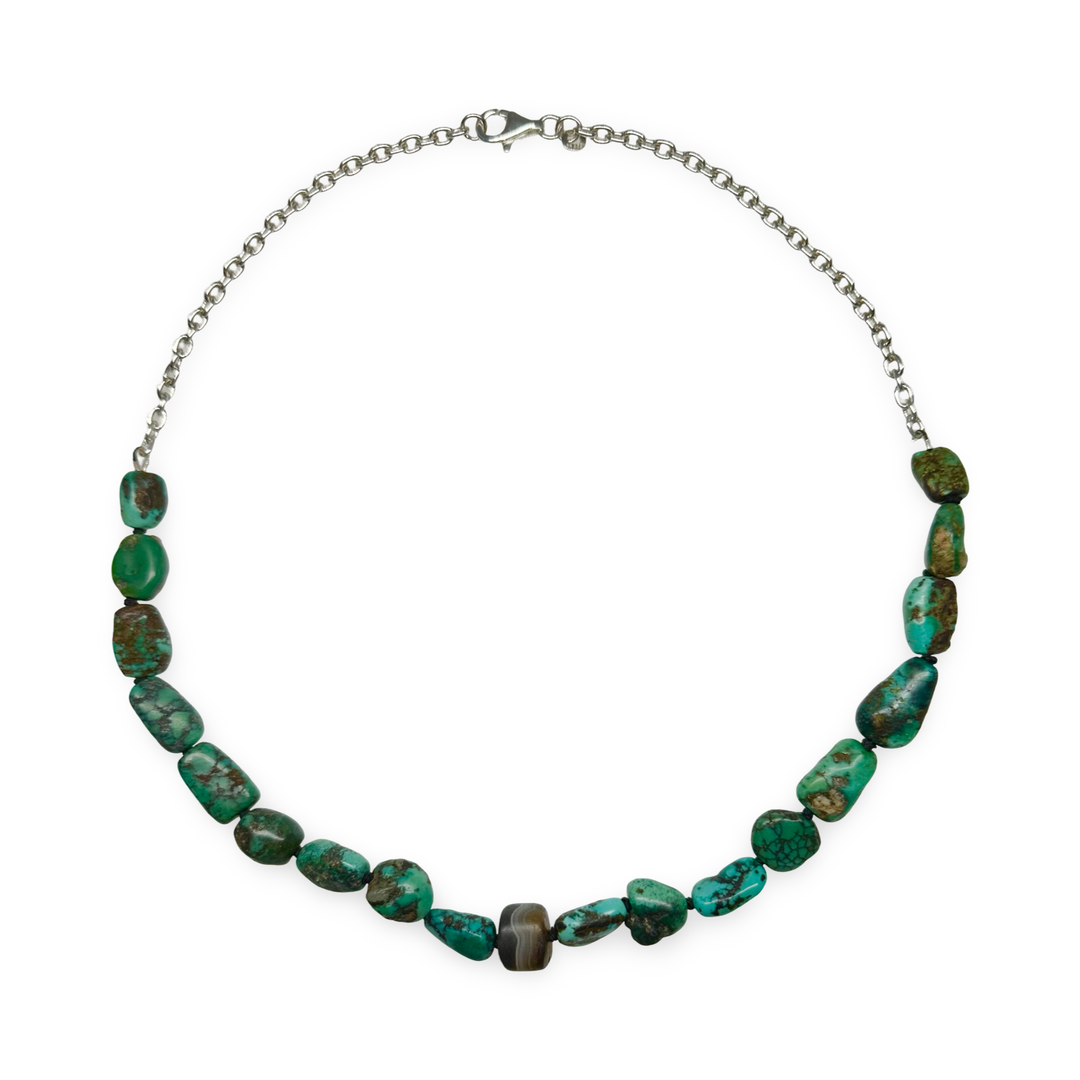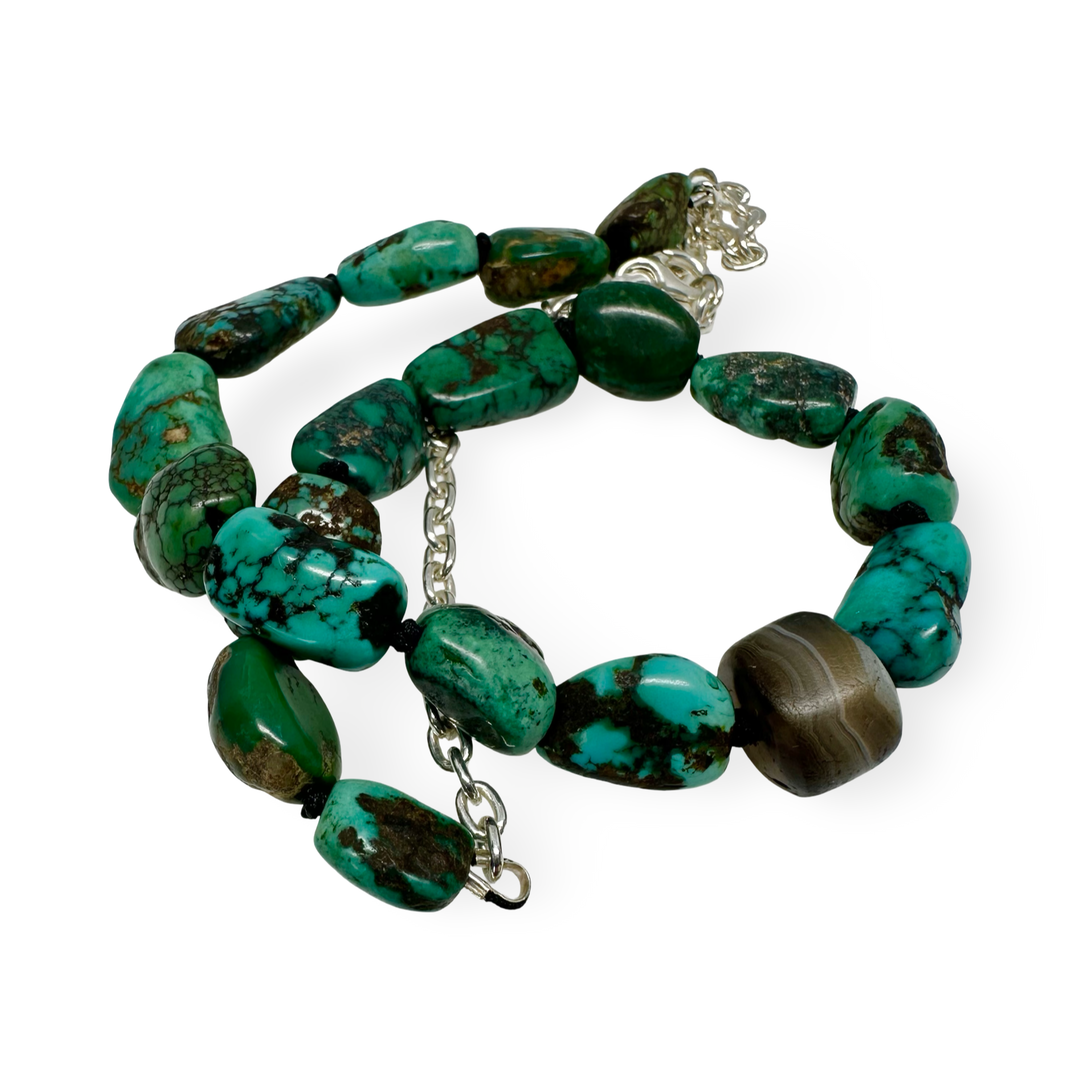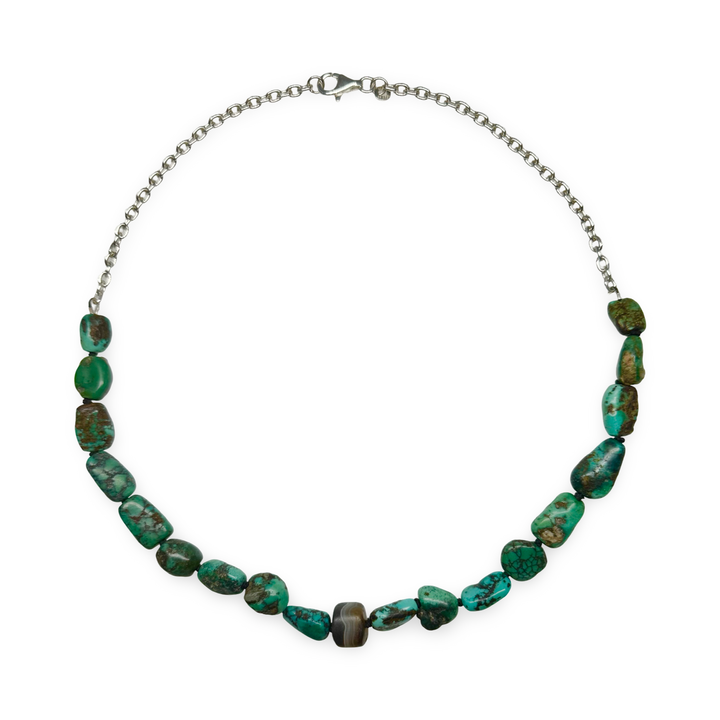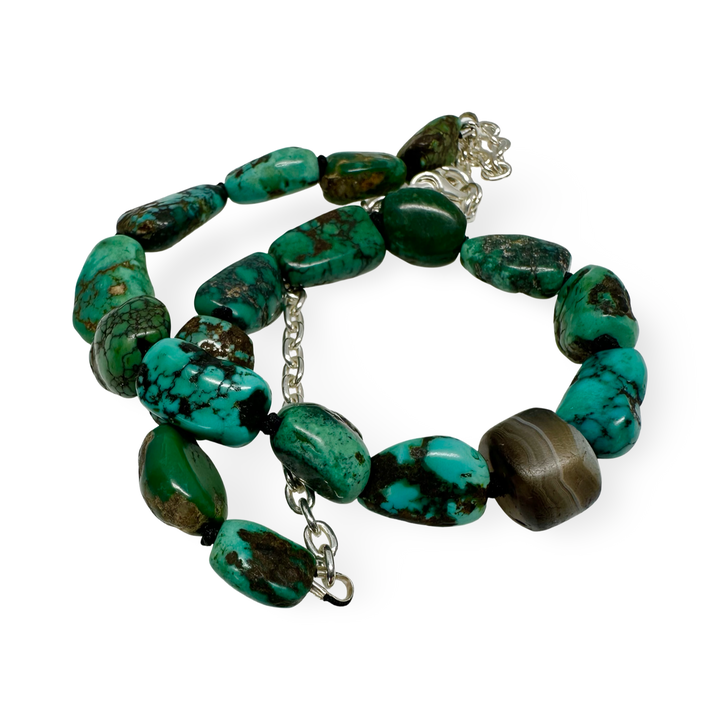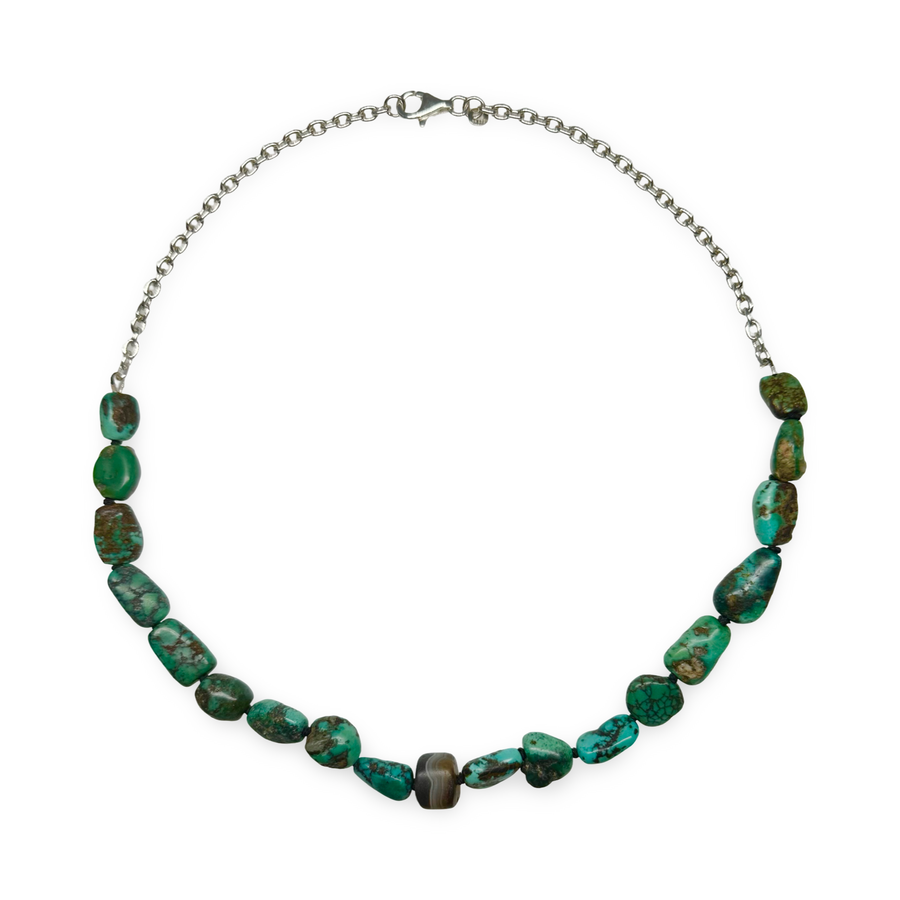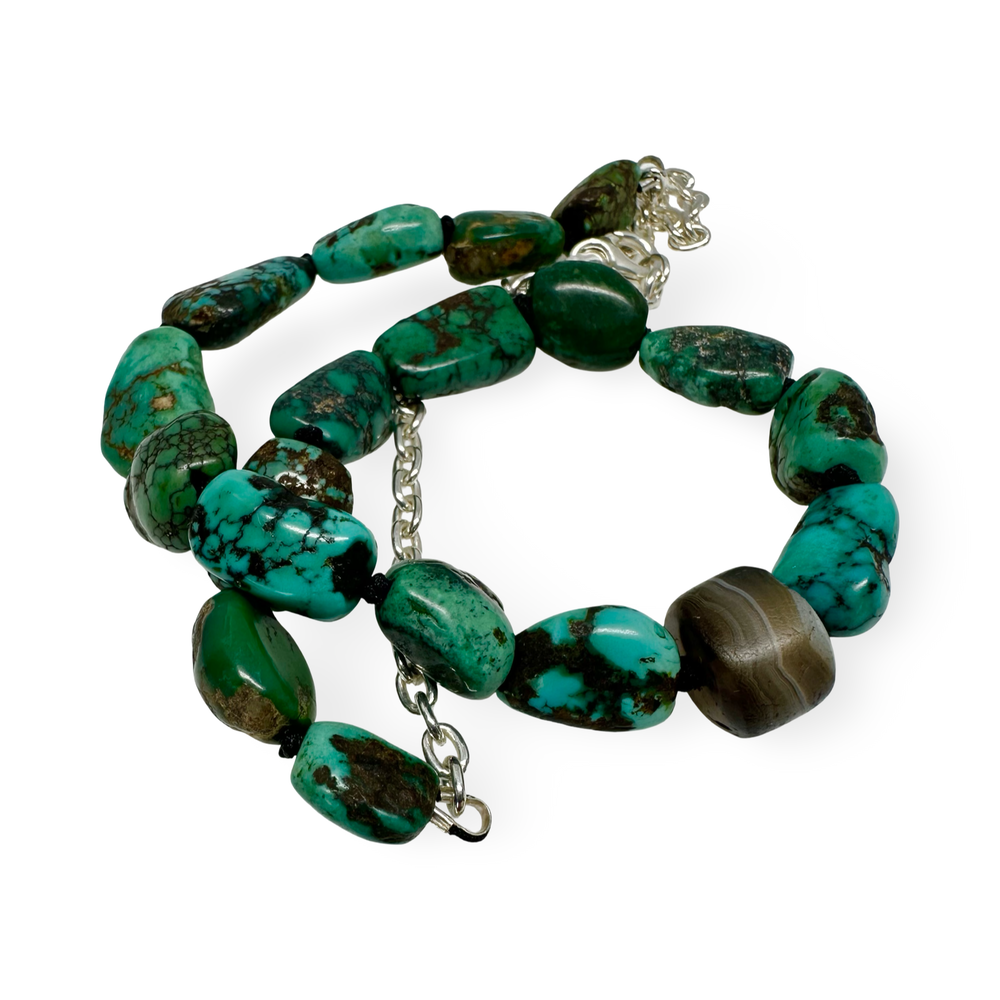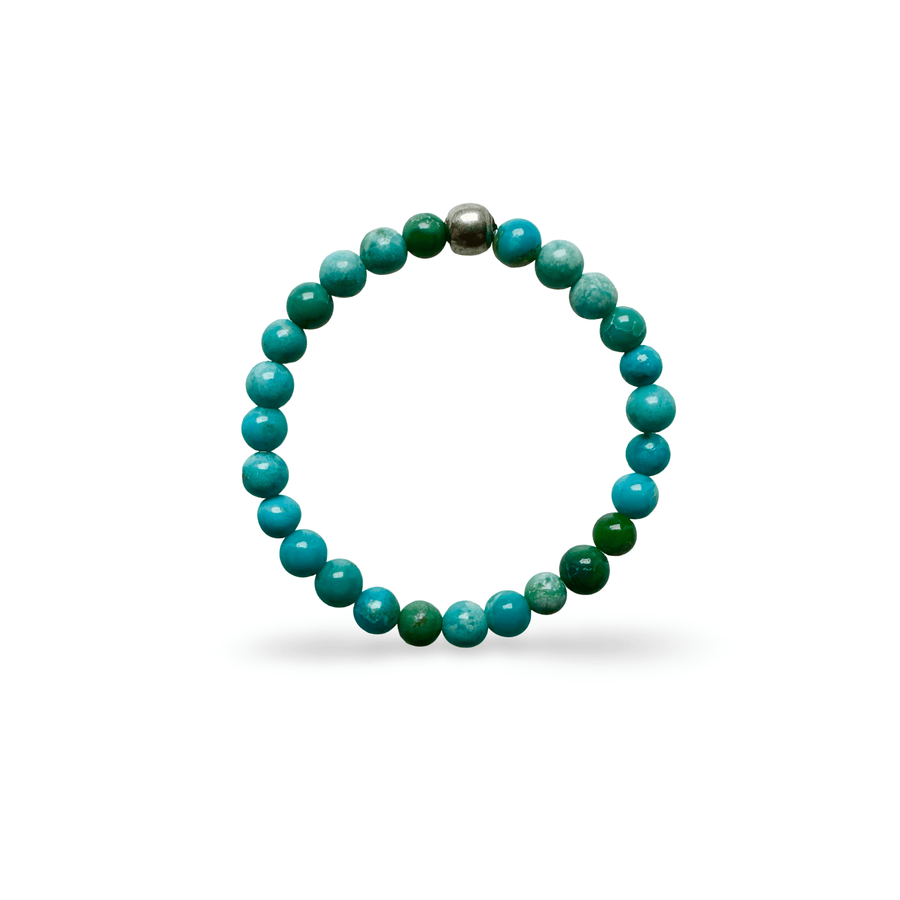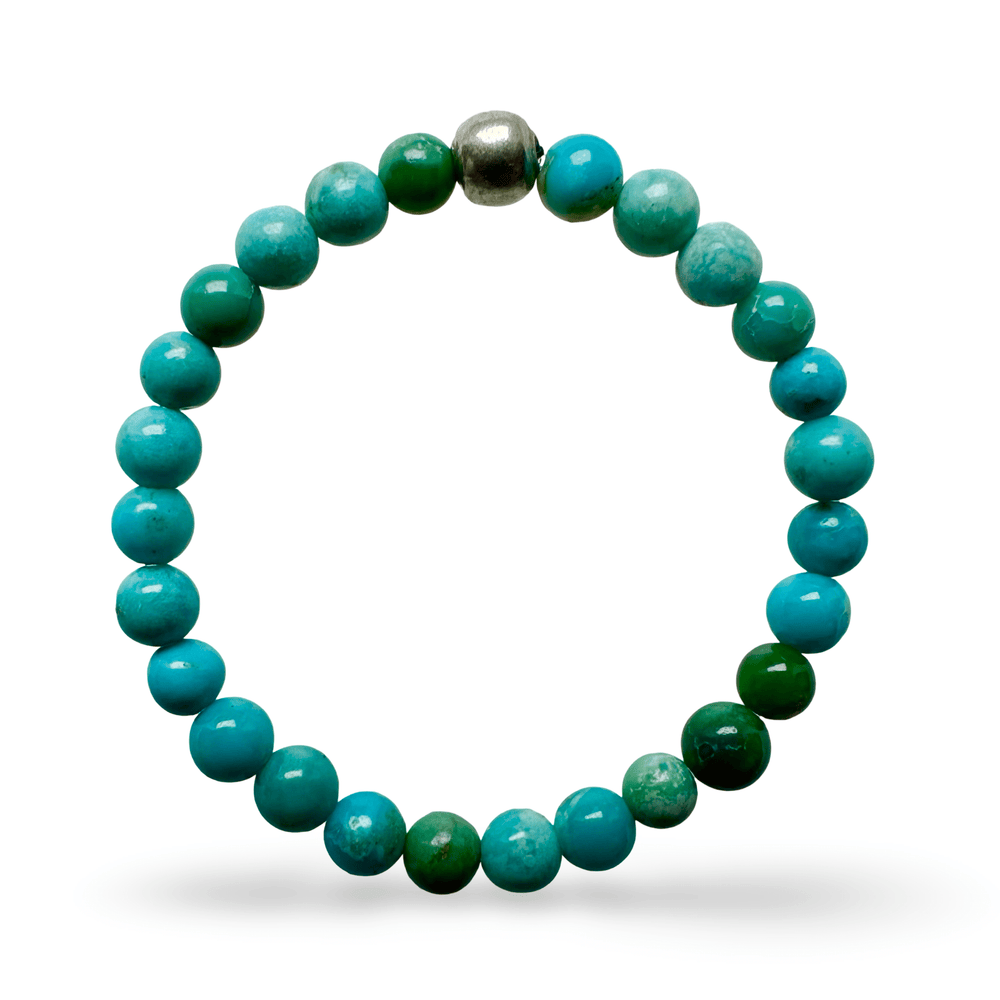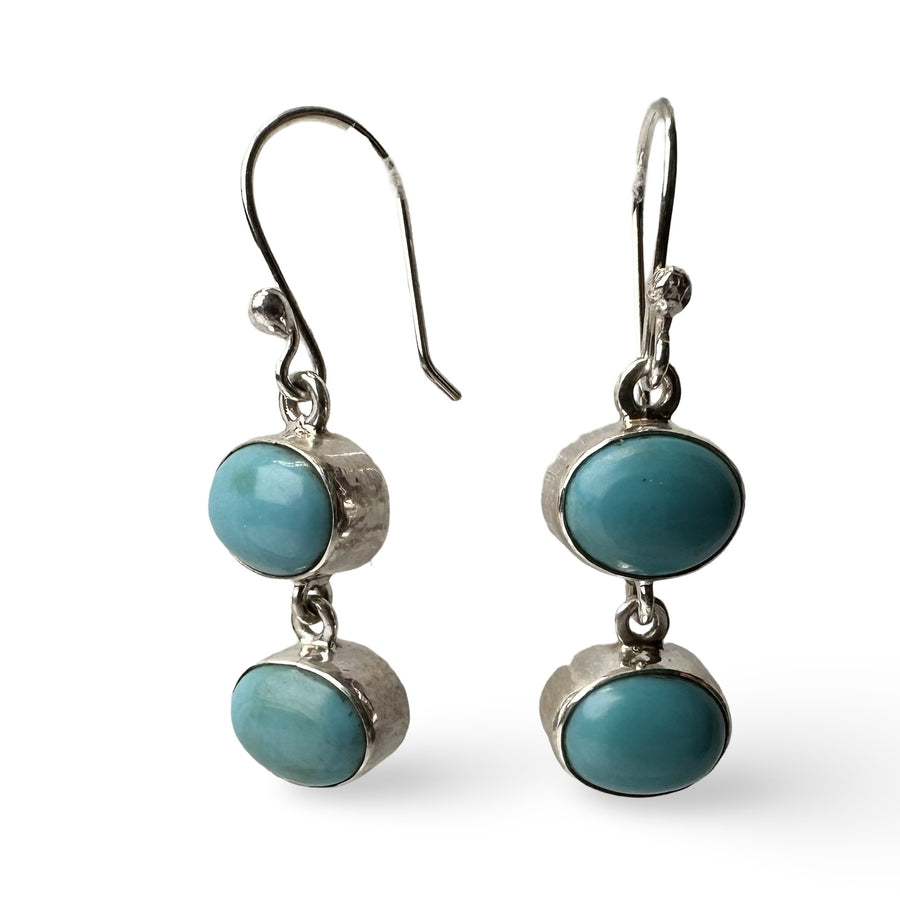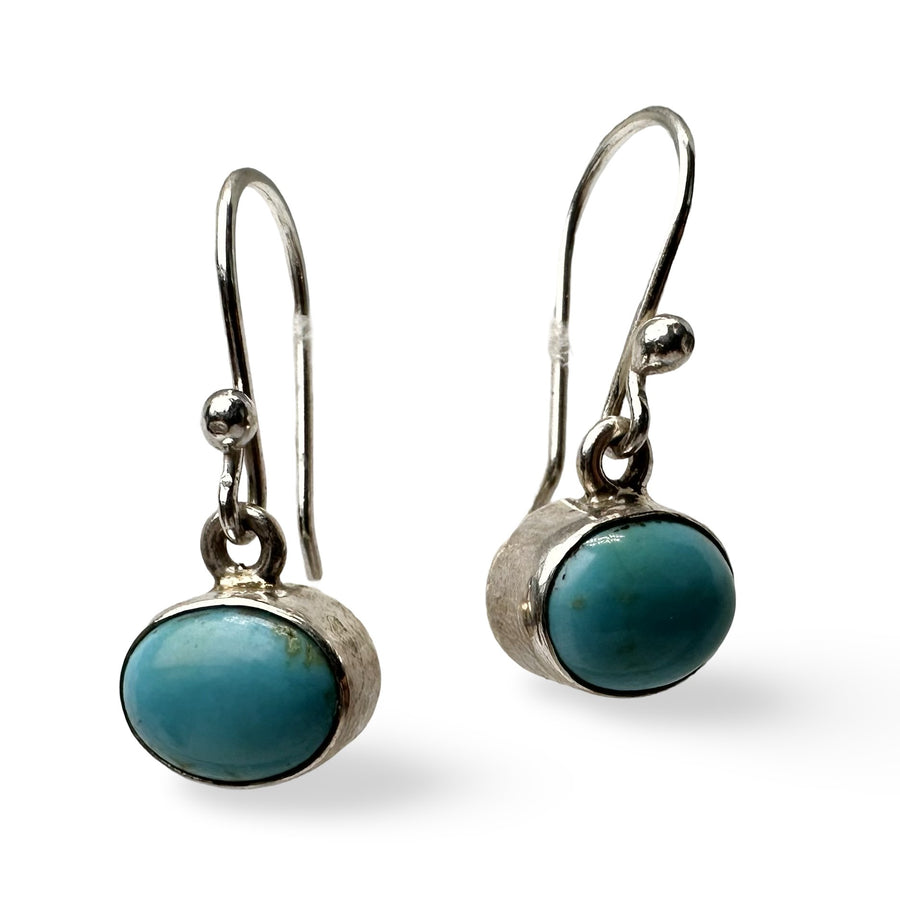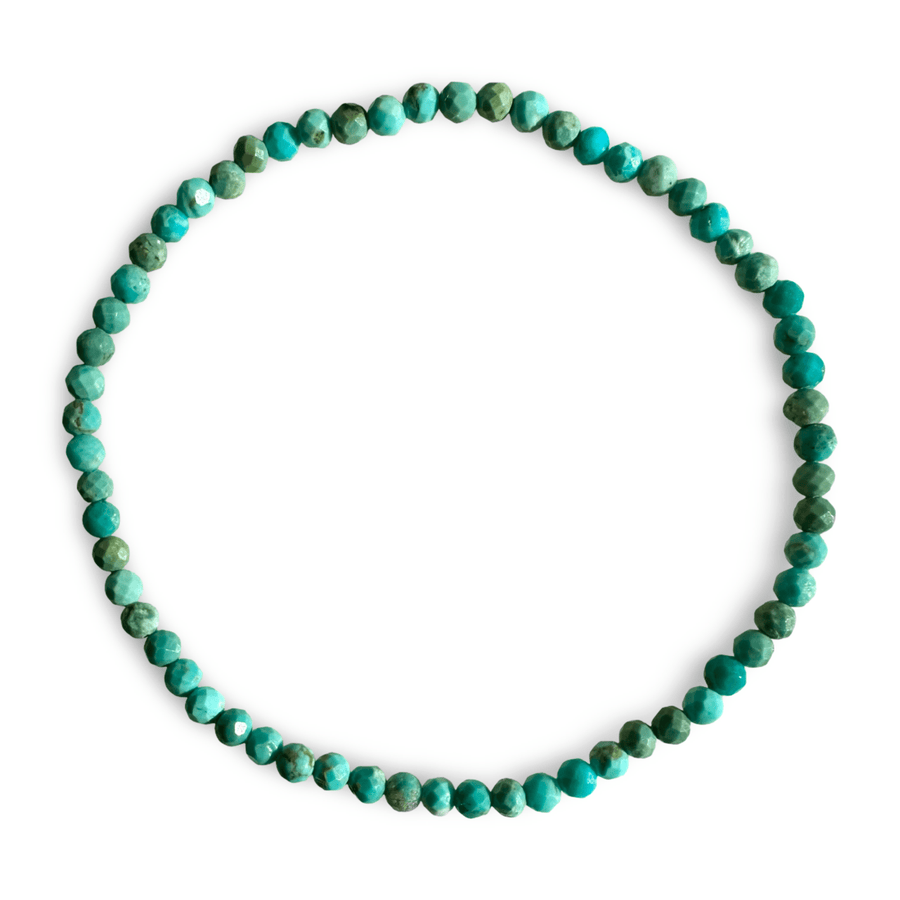Necklace with old turquoise and chung dzi
Silver necklace with 18 old Tibetan turquoise beads and a chung dzi. The necklace has a circumference of 48 cm and is fastened with a silver spring clasp. It was handmade at Atelier Tibet in Zurich.
Chung Dzi is a frequently misunderstood category of Dzi beads. This is mainly due to a mistranslation of the Tibetan term. Some people believe that the "Chung" in Chung Dzi means "inferior" or "less desirable" in Tibetan. However, this is a misconception, as chung dzi have always been very valuable. In fact, "chung" means "crystal" in Tibetan - which is what the ancient Tibetans called agates and chalcedony stones. The confusion is compounded by the fact that the ancient Tibetans believed that dzi beads with eyes were gifts from the gods and called them "pure dzi". They collectively referred to all other dzi, i.e. those made by humans, as chung dzi.
Turquoise is a bright blue to greenish gemstone that plays a central role in Tibetan jewelry. Traditionally, it is often used together with amber, coral and silver. In Tibetan culture, turquoise stands for protection, prosperity and spiritual strength. It is a symbol of the connection between heaven and earth. Believers often wear turquoise as an amulet or in prayer chains to attract good luck and positive energy. The jewelry is usually made by hand, which gives each piece an individual touch and is deeply rooted in Tibetan tradition.
Bracelets, bracelets, bracelets, bracelets, chains
| age | Wrist circumference |
|
Newborn |
9 - 12 cm |
|
6 months - 3 years |
12 - 14 cm |
|
4 - 10 years |
14 - 15 cm |
|
Teenager, ladies (XS) |
15 - 16 cm |
|
Ladies (M) |
16 - 17 cm |
|
Ladies (XL) |
18 - 19 cm |
|
Men (M) |
18 - 20 cm |
|
Men (XL) |
21 - 22 cm |
The length of the bracelet may be 1 cm to 3 cm longer than the measured wrist circumference, depending on your taste.
Finger rings
| Ring size | Inner diameter | Inner circumference |
|
48 |
15,3 mm |
48 mm |
|
50 |
15.9 mm |
50 mm |
|
52 |
16.6 mm |
52 mm |
|
54 |
17.2 mm |
54 mm |
|
56 |
17.8 mm |
56 mm |
|
58 |
18.5 mm |
58 mm |
|
60 |
19.1 mm |
60 mm |
|
62 |
19.7 mm |
62 mm |
|
64 |
20.4 mm |
64 mm |
|
66 |
21.0 mm |
66 mm |
- Take a ring that fits well.
- Place it on a ruler and measure the inner diameter (from one inner edge to the other).
- Compare the diameter with the table to determine the ring size.
- Take a thin strip of paper or thread.
- Wrap it around the part of the finger where you want the ring to sit (not too tight).
- Mark the point where the ends meet.
- Measure the length of the strip in millimeters. This is the inner circumference.
- Find the right size in the table.
- Measure the finger size in the evening, as fingers swell slightly during the day.
- If you are between two sizes, choose the larger size.
- Make sure that the ring fits over the knuckle.
- Free shipping from CHF 150


